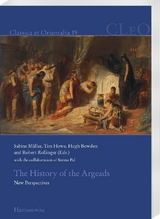Khorikyan, Hovhannes. 2017. The Administrative Division of the 13th Satrapy of Achaemenid Persia in the Reign of Darius II. Metamorphoses of History, Scientific Almanac 10: 174-180.
The Babylonian document BE. X.107 dated by the period of Darius II contains some very important information which is connected to the administrative division of the Achaemenid Empire. Shamesh/Iltammešbarakku who was the governor of the people of Urashtu (Urartu) and Milidu, is mentioned in the document. Urashtu-Urartu corresponds with Armenia and Milidu-Melitine, and when it was mentioned with the latter,
was an indivisible part of Satrapic Armenia, and Herodotus’ account proves this. Therefore, it can be said that Milidu is mentioned separately because it later became the center of Pactyica after Darius I’s administrative reforms; it was also one of the centers of the 13th satrapy which remained part of Armenia, despite the new administrative changes. Its ruler, the
satrap, continued having the title of “Governor of the People of Urashtu and Milidu (in a broad sense, Pactyica)”. Therefore, one can state that Melitine and its outlying regions, being to the west of the Euphrates where the territory of Armenia Minor would be established in the future, were an indivisible part of the country known as Armina-Armenia, during the entire period of Achaemenid reign.

 van den Berg, Gabrielle (ed.). 2017.
van den Berg, Gabrielle (ed.). 2017. 
 Avetisyan, Pavel & Yervand Grekyan (eds.). 2017.
Avetisyan, Pavel & Yervand Grekyan (eds.). 2017. Müllerm Sabine, Timothy Howe, Hugh Bowden & Robert Rollinger (eds.). 2017.
Müllerm Sabine, Timothy Howe, Hugh Bowden & Robert Rollinger (eds.). 2017. 